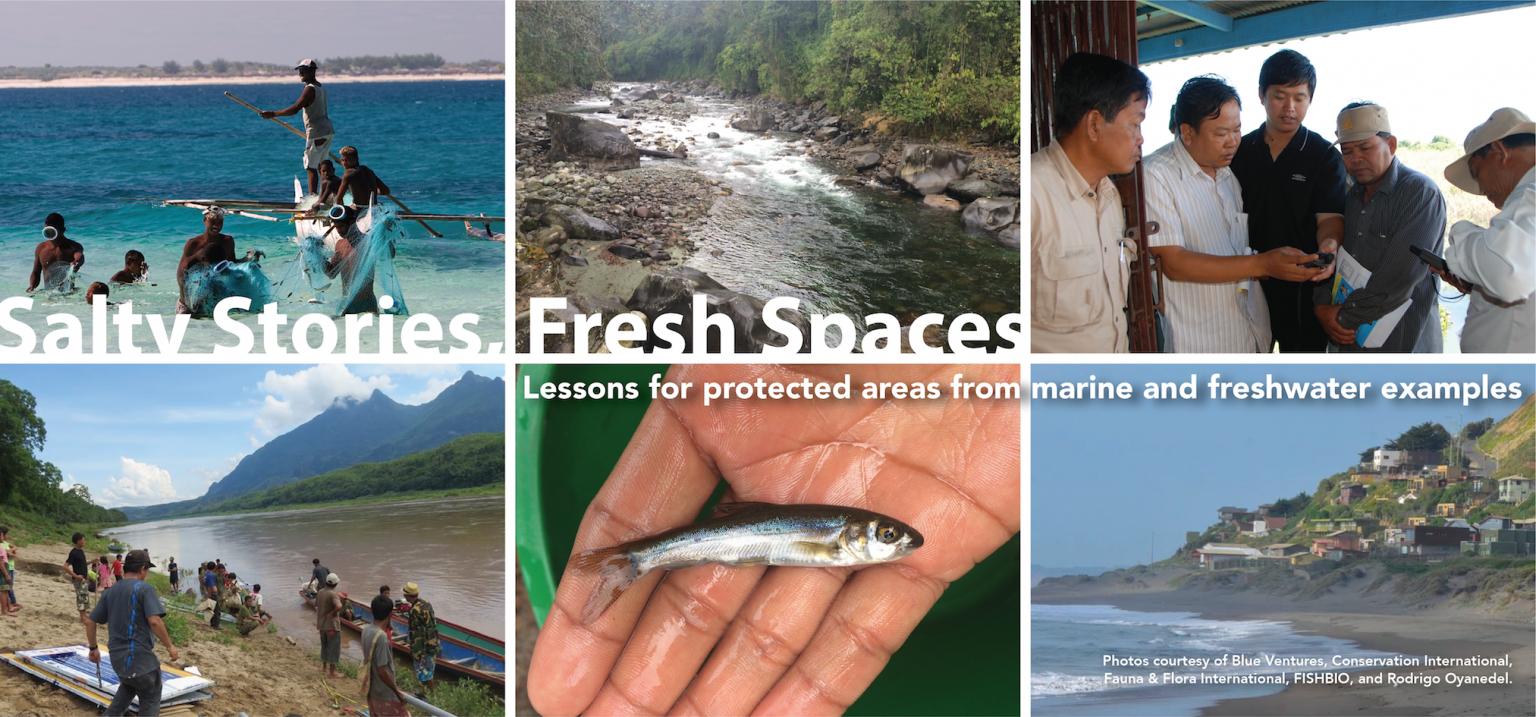Monday April 23, 2018

Marine protected areas have become popular fisheries management tools around the world – but did you know there are also freshwater protected areas? The general principle is the same whether in an ocean, river, or lake: prohibiting fishing in certain areas can help fish populations recover from fishing pressure. However, marine and freshwater protected areas are often managed and studied as if they are worlds apart. Freshwater protected areas are also typically less well known and researched, often because they are small and managed by local communities. To help prompt information sharing between the marine and freshwater realms, FISHBIO hosted a symposium at the 2016 World Fisheries Congress for researchers from both fields to share their protected area experiences. That exchange is the basis of a new review paper recently published in the journal Aquatic Conservation: Marine and Freshwater Ecosystems. FISHBIO researchers led a team that synthesized case studies from marine and freshwater protected areas (collectively Aquatic Protected Areas, or APAs) in nine countries, including Bangladesh, Cambodia, Chile, Lao PDR, Madagascar, Mexico, Myanmar, Thailand, and the United States. The paper finds many opportunities for sharing lessons between marine and freshwater realms based on five themes: ecological systems, APA establishment and effectiveness monitoring, sustaining APAs, and addressing challenges and external threats. (Loury et al. 2017)
Establishing and managing an APA requires understanding both the aquatic ecosystem and the people who rely on natural resources. In addition to conserving fishes or sustaining fisheries, APAs can also protect the habitat within their borders. Both marine and freshwater protected areas require spatial planning to identify key habitats to protect during crucial fish life stages, such as spawning areas. Networks of marine and freshwater protected areas may be needed to protect highly migratory species, and could even be connected by corridors to protect fishes as they migrate between environments. While fisheries researchers often focus on the ecological role of APAs, protected areas ultimately are a tool for managing human behavior (fishing) by limiting access to natural resources. Therefore, building support and engaging with local stakeholders at all stages of APA establishment is vital in both marine and freshwater realms. Community participation is a key factor for APA success; however, legal authority may be required to legitimize community participation in APA management.
In both marine and freshwater realms, there is concern about a growing push to establish more protected areas without adequate monitoring to see whether these APAs are meeting their desired outcomes. In particular, data gaps exist in socioeconomic and governance monitoring for both marine and freshwater protected areas, as most monitoring tends to focus on ecological outcomes, such as how APAs affect fish populations or aquatic habitats. Socioeconomic and governance data could be collected with similar survey or interview methods in both marine and freshwater settings, representing a potential opportunity for collaboration across realms. Both monitoring and sustaining APAs are long-term endeavors, but may not be as appealing to funders as establishing new protected areas, and are out of step with short-term donor funding cycles. Marine and freshwater practitioners can exchange lessons for diversifying and sustaining income sources to support APAs, and also collaborate on joint proposals to address shared challenges.
APAs are just one of many tools for managing fisheries, and are by no means a guaranteed success. Many challenges and external threats from human activities can influence the performance of APAs, such as illegal fishing, development, pollution, and climate change. Integrating land and water management practices at the coastal and watershed level can help address threats in both realms. Where poverty and food security needs of local communities put pressure on fisheries resources in developing countries through illegal fishing or development activities, socioeconomic interventions such as creating livelihood opportunities may be needed to support the success of APAs. Similar management or planning strategies could be used in both realms, such as zoning aquatic areas for multiple uses to help ensure community access to fisheries resources. Effective fisheries management is also needed to prevent destructive illegal fishing practices and ensure the health of fish populations outside APA boundaries.
While marine and freshwater protected areas are often managed separately, this review finds many shared attributes between them, suggesting the benefits of greater knowledge exchange. Researchers and managers can work to close the gap between realms by hosting and attending inclusive seminars and workshops, writing inclusive journal articles, and establishing collaborative networks. Also, using shared terminology (e.g., “freshwater protected areas” and “aquatic protected areas”) will help researchers find and cite each other’s work. Ultimately, marine and freshwater environments are connected, and collaborations could arise around protected areas focused on this intersection, such as deltas, estuaries, and bays. We hope that this paper can help stimulate further discussion and crossover between protected area researchers in marine and freshwater realms, and promote inclusion for all under the umbrella of Aquatic Protected Areas.
This post featured in our weekly e-newsletter, the Fish Report. You can subscribe to the Fish Report here.
